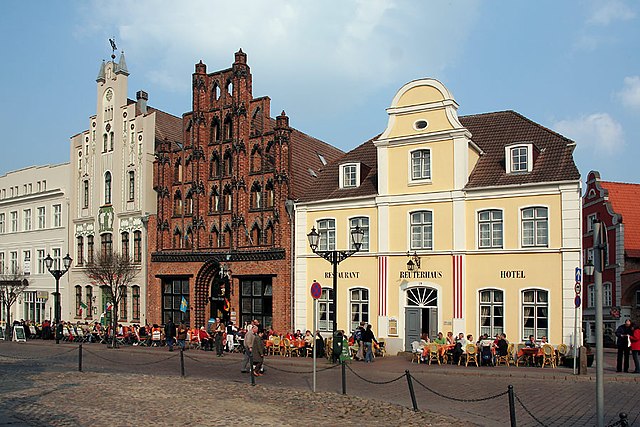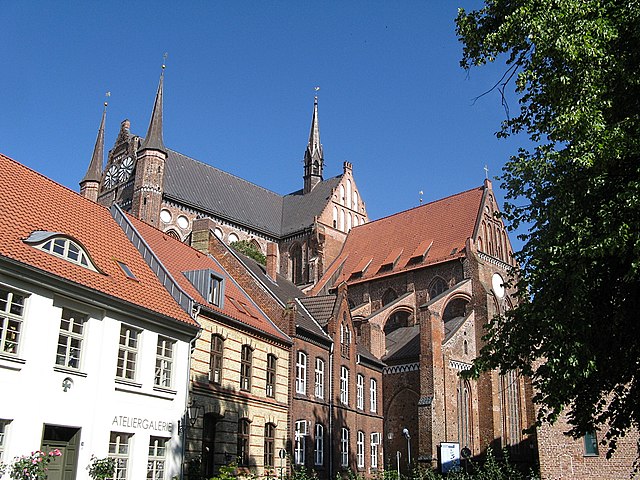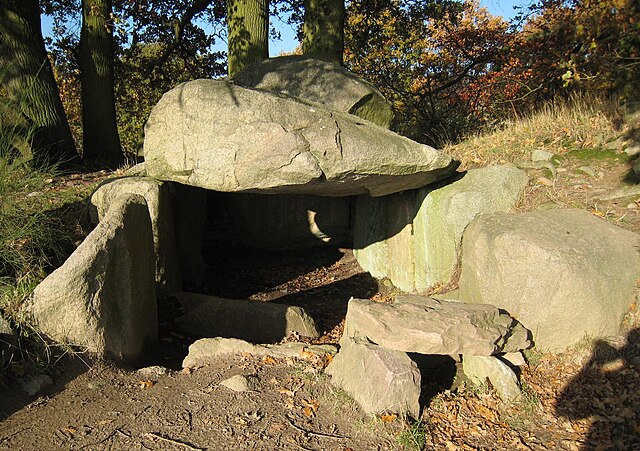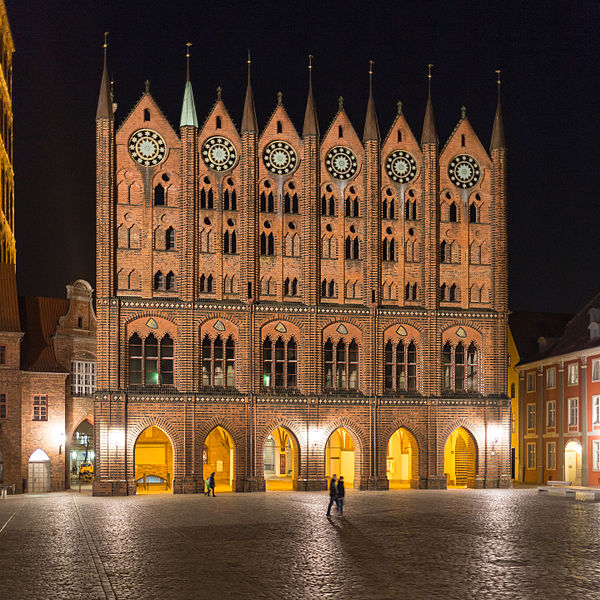Wismar, officially the Hanseatic City of Wismar is, with around 43,000 inhabitants, the sixth-largest city of the northeastern German state of Mecklenburg-Vorpommern, and the fourth-largest city of Mecklenburg after Rostock, Schwerin and Neubrandenburg. The city was the third-largest port city in former East Germany after Rostock and Stralsund.
Alter Schwede, c. 1380
Image: Wismar Georgenkirche Blick auf Nikolaikirche
Image: 11 Wismar Altstadt 008
Image: Wismar St. Georgen 2008 06 10 059
Mecklenburg-Vorpommern ; also known by its anglicized name Mecklenburg–Western Pomerania, is a state in the north-east of Germany. Of the country's sixteen states, Mecklenburg-Vorpommern ranks 14th in population; it covers an area of 23,300 km2 (9,000 sq mi), making it the sixth largest German state in area; and it is 16th in population density. Schwerin is the state capital and Rostock is the largest city. Other major cities include Neubrandenburg, Stralsund, Greifswald, Wismar, and Güstrow. It was named after the two regions of Mecklenburg and Vorpommern, and its name means the "nearer part of Pomerania", with the rest now lying in Poland.
One of more than 1000 megalith sites in Mecklenburg-Vorpommern, the Lancken-Granitz dolmen
Slavic ring fortress at Cape Arkona, Rügen Island
Late medieval Brick Gothic architecture in Stralsund, nowadays a UNESCO World Heritage Site
Rostock was the major overseas port of East Germany, and is one of the most important Baltic Sea ports today. Pictured is Hanse Sail, one of the world's largest maritime events.








